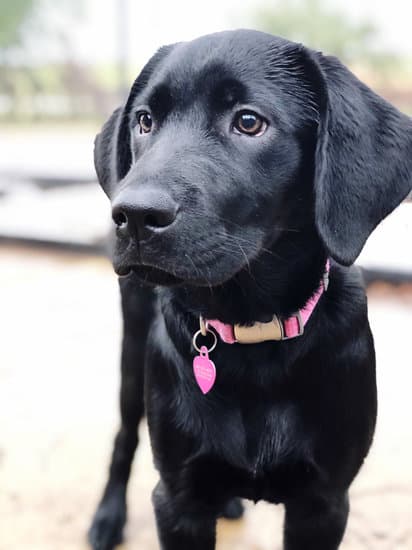Are you looking to keep your dog mentally and physically active? Learn how to train your dog in agility, a fun and challenging activity that can strengthen the bond between you and your furry friend.
Dog agility training involves teaching your dog to navigate through various obstacles such as tunnels, jumps, and weave poles, all while following your commands. In this article, we will explore the ins and outs of dog agility training, including its benefits, equipment needed, basic commands, and advanced techniques.
Dog agility training offers numerous benefits for both you and your dog. Not only does it provide physical exercise and mental stimulation for your pet, but it also strengthens their obedience skills. Additionally, agility training can be a great way to build trust and communication between you and your dog. By understanding the importance of agility training, you can create a rewarding experience for both you and your canine companion.
Before starting agility training with your dog, it’s essential to have the right equipment in place. From jumps to weave poles to tunnels, choosing the appropriate gear is crucial for a successful training session. Once equipped with the necessary tools, it’s time to focus on foundational obedience commands that will serve as building blocks for agility training. By mastering these commands early on, you’ll set the stage for a smooth transition into agility obstacles.
The Benefits of Agility Training for Dogs
Agility training for dogs is not only a fun and exciting activity, but it also offers a wide range of benefits for your furry friend. This type of training provides mental stimulation and physical exercise, which are crucial for keeping your dog happy and healthy. Here are some important benefits of agility training for dogs:
1. Physical Fitness: Agility training involves running, jumping, climbing, and weaving through obstacles, which helps improve your dog’s strength, endurance, and overall physical fitness. It also helps in maintaining a healthy weight and reducing the risk of obesity-related health issues.
2. Mental Stimulation: The problem-solving aspect of agility training challenges your dog’s mind and helps prevent boredom or destructive behaviors. It requires focus, concentration, and quick decision-making skills, which can keep your dog mentally sharp and engaged.
3. Bonding Opportunities: Agility training provides an excellent opportunity for you to bond with your dog. Working together as a team to conquer obstacles can strengthen the relationship between you and your pet.
To get started on agility training for your dog, consider the following key equipment that you will need:
In addition to equipment, it’s essential to have basic obedience commands such as sit, stay, come, and heel firmly established before introducing agility training to your dog. Once these commands are mastered, you can begin introducing them into the context of agility obstacles. By using positive reinforcement techniques such as treats and praise when they successfully complete an obstacle or command correctly can encourage good behavior during their agility training sessions.
Choosing the Right Equipment for Dog Agility Training
When it comes to dog agility training, having the right equipment is essential for a successful and safe training experience. Whether you’re a beginner or an experienced trainer, selecting the appropriate gear is crucial for setting up your dog for success in agility training.
Essential Equipment for Agility Training
One of the first pieces of equipment you’ll need for agility training is a set of high-quality, adjustable jumps. These jumps should be sturdy enough to withstand your dog’s weight and provide different heights for varying skill levels. Additionally, tunnel and chute sets are necessary to introduce your dog to navigating through enclosed spaces.
Other Necessary Gear
Weave poles are another important component of an agility course, helping dogs develop coordination and focus while weaving through the poles. A sturdy table or pause table is also required as a designated spot for your dog to stop and wait during the course. Finally, having a reliable training lead and harness will ensure your dog’s safety and control during practice sessions.
DIY Agility Equipment
For those looking to save on costs or get creative with their agility setup, there are various DIY options available. For example, PVC pipes can be used to create homemade jumps and weave poles, providing a cost-effective alternative to store-bought equipment.
By investing in the right equipment and properly maintaining it, you’ll create an environment that encourages both safety and fun for your dog as they engage in agility training. Remember that every piece of equipment should be suitable for your dog’s size, breed, and skill level to ensure their success in agility training.
Basic Commands and Obedience Training
Before delving into the exciting world of agility training, it is crucial to establish a strong foundation of basic commands and obedience training for your dog. This serves as the building blocks for more advanced agility skills, ensuring that your dog is responsive and well-behaved during training sessions.
The first step in preparing your dog for agility training is to focus on essential commands such as sit, stay, come, and heel. These commands are not only useful for everyday activities but also form the basis of communication between you and your dog during agility exercises. Consistent and positive reinforcement of these commands will instill good behavior and attentiveness in your canine companion.
In addition to basic commands, obedience training plays a significant role in shaping a well-behaved and disciplined dog. This includes teaching your dog to walk politely on a leash, greet people without jumping, and refrain from engaging in undesirable behaviors. By establishing fundamental obedience skills, you are laying the groundwork for a successful transition into agility training.
When starting with agility training, remember that patience is key. Every dog learns at their own pace, so it’s important to tailor your training approach to suit your pet’s individual needs. With dedication and perseverance, you can effectively prepare your dog for the exciting challenges that lie ahead in agility training.
| Basic Commands | Obedience Training |
|---|---|
| Sit | Leash walking |
| Stay | Greeting manners |
| Come | Behavior management |
Introduction to Agility Obstacles
When it comes to agility training for dogs, introducing them to various obstacles is a crucial part of the process. Teaching your dog how to navigate through tunnels, jumps, and weave poles not only challenges them physically but also mentally. In this section, we’ll explore the importance of these agility obstacles and how to effectively train your dog to conquer them with confidence.
Understanding the Purpose of Agility Obstacles
Each agility obstacle serves a specific purpose in enhancing your dog’s overall physical and mental abilities. Tunnels require dogs to conquer their fear of enclosed spaces and rely on their sense of smell and hearing to navigate through.
Jumps help improve a dog’s coordination, balance, and strength while weave poles encourage agility, speed, and focus. By introducing your dog to these obstacles, you are providing them with an opportunity to develop essential skills that contribute to their well-being.
Implementing Effective Training Techniques
Introducing your dog to agility obstacles requires patience, consistency, and positive reinforcement. Start by familiarizing them with each obstacle one at a time. Use treats and verbal praise to motivate and reward your dog as they successfully complete each task.
For example, when teaching them the weave poles, guide them through the poles using treats as a lure until they understand the concept of weaving back and forth. Gradually increase the difficulty level as they become more skilled at navigating each obstacle.
Fostering Confidence and Trust
As you guide your dog through agility training, it’s important to create an environment that fosters confidence and trust. Building a strong bond with your dog during this process will help them feel secure in following your instructions as they tackle each obstacle.
Remember that every dog progresses at their own pace, so be patient and supportive throughout the training sessions. With consistent practice and encouragement, you’ll soon witness your furry companion mastering agility obstacles with excitement and confidence.
By understanding the purpose of agility obstacles and implementing effective training techniques while fostering confidence and trust in your dog during the process will undoubtedly lead to success in mastering these challenges.
Creating a Training Schedule
To start, it’s important to consider your dog’s age, breed, and overall health when creating a training schedule. Puppies, for example, should have shorter training sessions compared to adult dogs as their growing bodies need time to rest. Additionally, high-energy breeds may require more frequent and intense training sessions compared to low-energy breeds.
When scheduling agility training sessions, aim for consistency by setting aside specific times each day dedicated to training. This will help your dog understand that agility training is a regular part of their routine. Incorporate variety in your training schedule by mixing up the types of obstacles and exercises to keep your dog engaged and prevent boredom.
Lastly, be mindful of not overtraining your dog. Just like humans, dogs need rest days to allow their bodies to recover from physical exertion. Overtraining can lead to physical strain and burnout for your dog, so make sure to incorporate rest days in the schedule.
In order to maintain your dog’s interest in agility training, it is important that you set specific times for engagements with this activity.
| Training Schedule | Description |
|---|---|
| Consistency | Aiming for specific times each day dedicated to agility training |
| Variety | Mixing up types of obstacles and exercises for engagement |
| Rest Days | Incorporating rest days into the schedule for physical recovery |
Positive Reinforcement and Motivation
Here are some effective ways on how to train your dog in agility using positive reinforcement:
- Use treats: Treats are a great way to reward your dog for successfully completing an agility obstacle or following a command. Choose high-value treats that your dog loves and reserve them specifically for training sessions.
- Use praise and affection: In addition to treats, lavish your dog with praise, petting, and affection when they perform well during training. Dogs thrive on their owner’s approval and attention, so don’t underestimate the power of positive words and physical affection.
- Use toys: For some dogs, playing with a favorite toy can be just as rewarding as getting a treat. Use their favorite toy as a motivator during agility training to keep them focused and engaged.
It’s important not to rely solely on food rewards and mix up the types of rewards you use during training sessions. This will prevent your dog from becoming too food-focused and will make the training process more enjoyable for both you and your pup.
Remember that every dog is unique, so it may take some trial and error to figure out what type of reward works best for your furry companion. Stay patient, be consistent, and observe what motivates your dog the most during agility training sessions. With time and practice, you’ll find the right balance of rewards that keeps your dog eager to learn and excel in agility.
Common Mistakes and How to Avoid Them in Agility Training
When it comes to training your dog in agility, it’s important to be aware of common mistakes that can hinder the training process. Avoiding these mistakes will ensure a successful and enjoyable experience for both you and your furry friend. One of the most common mistakes in agility training is rushing the process.
It’s important to remember that agility training takes time and patience. Rushing your dog through the training process can lead to frustration and confusion, ultimately hindering their progress.
Another common mistake is neglecting obedience training. Before delving into agility training, it’s crucial to establish a strong foundation of basic commands and obedience. This will not only make the training process smoother, but also ensure that your dog is able to navigate through obstacles safely and effectively.
Additionally, failing to select the right equipment for agility training can be a significant mistake. It’s essential to choose appropriate and safe equipment for your dog, taking into consideration their size, breed, and skill level.
To avoid these mistakes, take the time to fully understand how to train your dog in agility before starting the process. Research different training techniques, seek guidance from experienced trainers, and consider enrolling in a beginner’s agility class with your dog. By taking a thoughtful and structured approach to agility training, you can set both yourself and your dog up for success in this fun and challenging activity.
Advanced Agility Training Techniques
Once your dog has mastered the basic agility obstacles and commands, it’s time to take their skills to the next level with advanced agility training techniques. This stage of training focuses on refining your dog’s abilities, improving their speed and accuracy, and introducing them to more complex agility courses. Advanced training is not only a great way to challenge your dog both mentally and physically, but it also strengthens the bond between you and your furry friend.
One of the key aspects of advanced agility training is honing your dog’s ability to navigate through more intricate courses with speed and precision. This can include incorporating challenging obstacles such as A-frames, seesaws, and elevated platforms. These obstacles require a greater level of coordination from your dog, as well as the ability to follow more complex commands from you as their handler.
In addition to adding new obstacles, advanced agility training also focuses on enhancing your dog’s speed, focus, and endurance. This may involve practicing specific drills and exercises that are designed to improve these attributes.
For example, setting up distance challenges or timing your dog’s performance on certain courses can help them build their speed while maintaining accuracy. By incorporating these techniques into your training routine, you can continue to push the boundaries of what your dog can achieve in agility while keeping their sessions fun and engaging.
Overall, advanced agility training offers an exciting opportunity for both you and your dog to further develop your teamwork, skillset, and performance in this thrilling sport. As you progress through each stage of training – from basic obedience to mastering advanced techniques – you’ll witness firsthand the incredible potential that lies within your canine companion. With dedication, patience, and consistent practice, you and your dog can conquer any agility course with confidence and finesse.
Conclusion
In conclusion, agility training is a fantastic way to not only keep your dog physically fit and mentally stimulated but also to strengthen the bond between you and your furry friend. By incorporating basic commands, introducing agility obstacles, and creating a consistent training schedule, you can set your dog up for success in agility training. Remember to use positive reinforcement and motivation to keep your dog engaged and excited about the training process.
As you progress through agility training with your dog, it’s important to celebrate the milestones and progress made along the way. Whether it’s successfully navigating through a tunnel or mastering weave poles, acknowledging achievements will boost your dog’s confidence and make the training experience more enjoyable for both of you. It’s also a great opportunity to reinforce the bond between you and your dog, as you work together towards common goals.
Frequently Asked Questions
What Age Should Dogs Start Agility Training?
Dogs can start agility training at around 1 year old, once they have developed physically and mentally. It’s important to wait until the dog’s growth plates have closed to avoid any potential injuries.
Can You Teach Your Dog Agility at Home?
Yes, you can teach your dog agility at home with some basic equipment like jumps, tunnels, and weave poles. Consistent training, patience, and positive reinforcement are key to teaching agility skills.
How Are Agility Dogs Trained?
Agility dogs are trained through positive reinforcement methods such as treats, toys, and verbal praise. Training includes teaching the dog to navigate obstacles like jumps, tunnels, weave poles, and A-frames while building their confidence and trust in their handler.

Welcome to the blog! I am a professional dog trainer and have been working with dogs for many years. In this blog, I will be discussing various topics related to dog training, including tips, tricks, and advice. I hope you find this information helpful and informative. Thanks for reading!





